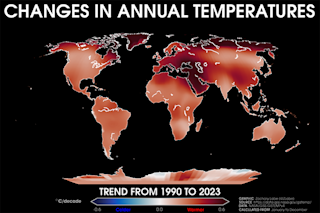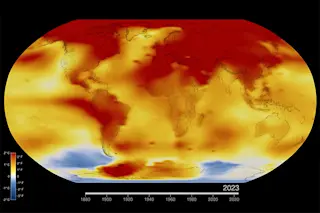A new but ephemeral tributary of Left Hand Creek near Boulder, Colorado catches the sun's fading light. (Photo: © Tom Yulsman Since the epic rainfall and subsequent flooding that hit Colorado's Front Range beginning two weeks ago, I've been going back to a couple of places near where I live to document the aftermath of the deluge with my camera. Among many things, I've been struck by how Left Hand Creek, an ordinarily tame stream that pours out onto the plains from the foothills of the Colorado Rockies, jumped its banks and transformed its floodplain for hundreds of yards on either side. The waters are receding now, in places leaving behind a fractal pattern of rivulets and sediments like the one in the photograph above. Fractals are self-similar patterns, meaning they are similar at different scales. The pattern in that photograph is repeated at a larger scale in this photograph ...
Wake of the Flood Fractals
Left Hand Creek flooding transformed the Colorado landscape, revealing stunning fractal patterns as flood waters recede.
More on Discover
Stay Curious
SubscribeTo The Magazine
Save up to 40% off the cover price when you subscribe to Discover magazine.
Subscribe













